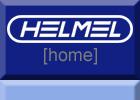 |
|
 |
 |

|
|
|
 |
|
|
Tech Series |
|||||||||
To select a stylus that will enhance your inspection, we recommend:Stylus ball size and length. A ball stylus, when used during the inspection process produces a single point of contact with your artifact. Variations in surface condition affect repeatability. To counter this, it is recommended to use as large a ball styli as possible. Furthermore, identify the shortest possible combination of stylus and extension that will still allow you access to all features being inspected. The longer the probe system, the greater the pre-travel length before the trigger occurs. In some cases, the relationship between the ball size and shank size can impede the depth the stylus can go into smaller features. Care must be taken to prevent the shank from contacting your part during the inspection process. This condition is exaggerated when using small ball size and long extensions. Some inspection processes require long reaches to make contact on a feature, otherwise most features have short access distances. To counter this, it is recommended to utilize stylus change racks where the touch probe can switch stylus configurations to optimize the inspection results. Performance Considerations The triggering of a touch probe can be affected by the weight of the stylus and extensions in use. During the inspection process you may encounter false triggers when attempting high speed traverse moves. To counter this, you can change the motion characteristics to slow down the traverse speed, or choose a combination of stylus and extension to reduce weight. This can be accomplished by switching to Ceramic or Carbon Fibre. The table below illustrates the weight differences between a common 40mm M2 extension.
As you can see, there is a significant weight reduction moving from stainless steel to carbon fibre. Therefore, when you select a stylus, or a stylus/extension combination try to keep the weight and length at a minimum. Extended Length Probe Systems When it is required to build a probe system that reach long distances, you have two choices. The first, and less attractive, is to add extensions between the touch probe and stylus. Very long extensions adversely affect performance and repeatability. To counter this, using probe extensions, such as the PEL family should be considered. These extensions are between the probe head and touch probe, effectively moving the touch probe closer to the inspection. The end result is you build a shorter stylus increasing rigidity and repeatability. |
||||||||||
|